|
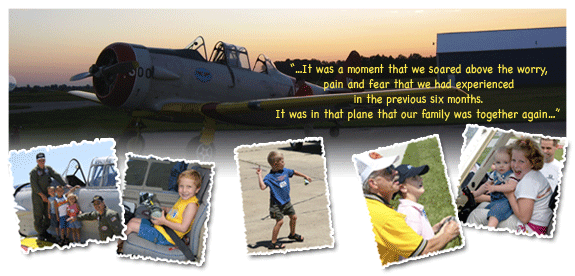
A Brief History of Aviation
Man has always been fascinated by the prospect of flight. Birds' speed, freedom of direction and the elimination of delay caused by natural obstacles, created a curiosity that sparked early enthusiasts to explore and imitate the wonder of flight.
The human history of aviation dates well before the 1800s with more than fifty documented endeavors in flight. In one of the first investigations in aerodynamics, Leonardo da Vinci invented the airscrew and parachute in the 16th century. The artist also had visions and drew diagrams of a helicopter, glider and ornithopter even though he may not have actually created, or built, the devices.
 The Montgolfiers, two French brothers, succeeded in 1783 in creating the first true apparatus to "fly" when they created a linen, fire powered balloon that floated along for more than five miles. The Montgolfiers, two French brothers, succeeded in 1783 in creating the first true apparatus to "fly" when they created a linen, fire powered balloon that floated along for more than five miles.
The first bona fide, patented plans for an airplane with an engine were developed in 1843 by William S. Henderson, although the plane was not actually capable of flying. But due to the extensive experiments and successive developments in aerodynamics, it was not long after that the concept of true aviation was truly ready to "take off."
 A heavier-than-air design, called the glider, first made flight a reality. While the glider had been invented in 1804 by a British inventor, George Cayley, the first glider pilot was Otto Lilienthal. Fueled by his efforts and success, other inventors continued to improve on Lilienthal's design. A heavier-than-air design, called the glider, first made flight a reality. While the glider had been invented in 1804 by a British inventor, George Cayley, the first glider pilot was Otto Lilienthal. Fueled by his efforts and success, other inventors continued to improve on Lilienthal's design.
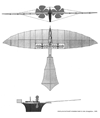 In 1848, John Stringfellow created a small, steam powered model plane that was capable of "brief flight." Then in the 1890s, again using a small steam power craft, an American scientist, Samuel P. Langley, attempted a piloted flight. However, after two failed attempts, the project was terminated. In 1848, John Stringfellow created a small, steam powered model plane that was capable of "brief flight." Then in the 1890s, again using a small steam power craft, an American scientist, Samuel P. Langley, attempted a piloted flight. However, after two failed attempts, the project was terminated.
It was during the early 1900s when the actual turning point for aviation occurred and two determined brothers from Dayton, Ohio struggled to make their dream of flight a reality.
 Orville and Wilbur Wright disregarded several failed attempts to fly and persevered in their seemingly unattainable goal. Using a common glider airframe, they created the Kitty Hawk Flyer, named after the area on the Outer Banks of North Carolina where they tested their airplanes. And while their first attempt at flight failed, they were successful on December 17, 1903, when the first legitimate powered flight lasted 12 seconds. The Wright Brothers went on to chronicle approximately 1,000 flights during a four-year period on the sand dunes of North Carolina. As a result, the Wright Brothers ushered in a new era of flight and the "air age" was born. Orville and Wilbur Wright disregarded several failed attempts to fly and persevered in their seemingly unattainable goal. Using a common glider airframe, they created the Kitty Hawk Flyer, named after the area on the Outer Banks of North Carolina where they tested their airplanes. And while their first attempt at flight failed, they were successful on December 17, 1903, when the first legitimate powered flight lasted 12 seconds. The Wright Brothers went on to chronicle approximately 1,000 flights during a four-year period on the sand dunes of North Carolina. As a result, the Wright Brothers ushered in a new era of flight and the "air age" was born.
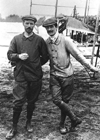 Shortly thereafter, in 1905, the first aircraft company was created by two French fliers, Charles and Gabriel Voisin while Glenn Curtiss was founding the first US airplane company in New York. In 1909, two more American companies were formed -- one by Glenn Martin and the other by the Wright Brothers whose Wright Company began assembling military planes. Shortly thereafter, in 1905, the first aircraft company was created by two French fliers, Charles and Gabriel Voisin while Glenn Curtiss was founding the first US airplane company in New York. In 1909, two more American companies were formed -- one by Glenn Martin and the other by the Wright Brothers whose Wright Company began assembling military planes.
Although there was great reluctance to use aviation for commercial use, various governments foresaw the potential of airplanes capabilities including services they could offer during wartime. As World War I approached, warplane production rose and improvements in aerodynamics, aircraft construction and motor power increased. During the First Air War, aircraft speeds increased to 130 mph and aerial battles were known to take place at the unbelievable altitude of 19,000 ft.
 After the war the abundance of warplanes enabled them to be converted for commercial use and the U.S. Post Office began using aviation to its benefit with the introduction of "airmail" in 1918. This provided enhanced efficiency and service while decreasing coast-to-coast deliveries by 22 hours. After the war the abundance of warplanes enabled them to be converted for commercial use and the U.S. Post Office began using aviation to its benefit with the introduction of "airmail" in 1918. This provided enhanced efficiency and service while decreasing coast-to-coast deliveries by 22 hours.
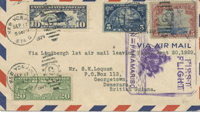 With aviation's continued advancements, 1927 marked the completion of the first non-stop, continent-to-continent flight by Charles Lindbergh when he flew from New Jersey to Paris in 33 hours generating strong support for aviation. Americans were no longer afraid to fly and the number of passengers dramatically increased as did private investments into the aviation industry. With aviation's continued advancements, 1927 marked the completion of the first non-stop, continent-to-continent flight by Charles Lindbergh when he flew from New Jersey to Paris in 33 hours generating strong support for aviation. Americans were no longer afraid to fly and the number of passengers dramatically increased as did private investments into the aviation industry.
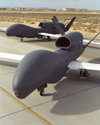 In the modern era, aviation has broadened opportunities worldwide and has made our world increasingly smaller while it has allowed numerous technological advancements. Indeed, recent years have introduced further growth in aviation exemplified by the Global Hawk which, in 2001, was the first plane to achieve the status of the longest point-to-point flight by an unmanned aircraft. Further, 2003 marked the first century of aviation and a celebration of its incredible contribution to the world when an autonomous flight, using a computer-controlled model aircraft, took place by crossing the Atlantic Ocean. In the modern era, aviation has broadened opportunities worldwide and has made our world increasingly smaller while it has allowed numerous technological advancements. Indeed, recent years have introduced further growth in aviation exemplified by the Global Hawk which, in 2001, was the first plane to achieve the status of the longest point-to-point flight by an unmanned aircraft. Further, 2003 marked the first century of aviation and a celebration of its incredible contribution to the world when an autonomous flight, using a computer-controlled model aircraft, took place by crossing the Atlantic Ocean.
 Aviation has enabled us to view and experience our world from amazing and advancing perspectives. It has even given rise to space travel and the exploration of stars and plants that could only be seen through telescopes a few decades ago. And now, time will tell what new, exciting progress will evolve as the sky is no longer the limit and distant galaxies may be a goal within our lifetimes. Aviation has enabled us to view and experience our world from amazing and advancing perspectives. It has even given rise to space travel and the exploration of stars and plants that could only be seen through telescopes a few decades ago. And now, time will tell what new, exciting progress will evolve as the sky is no longer the limit and distant galaxies may be a goal within our lifetimes.
Return to the Hangar.
|

